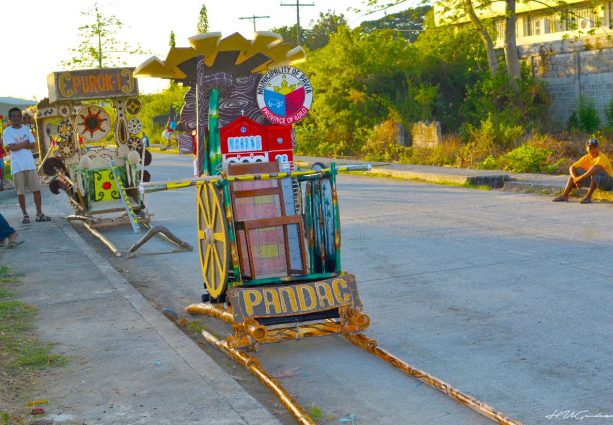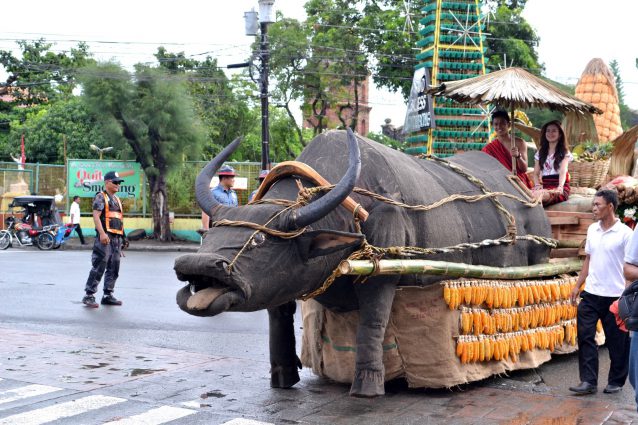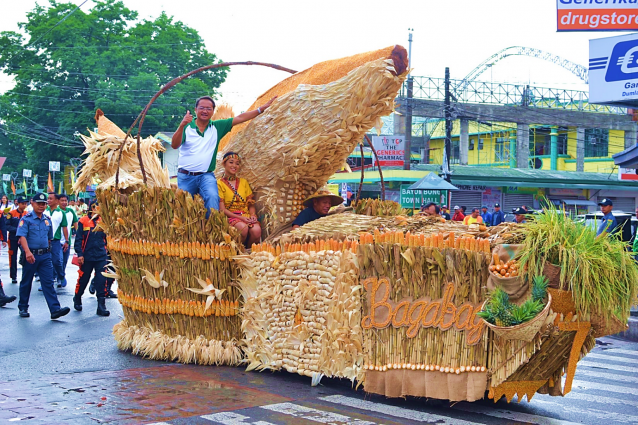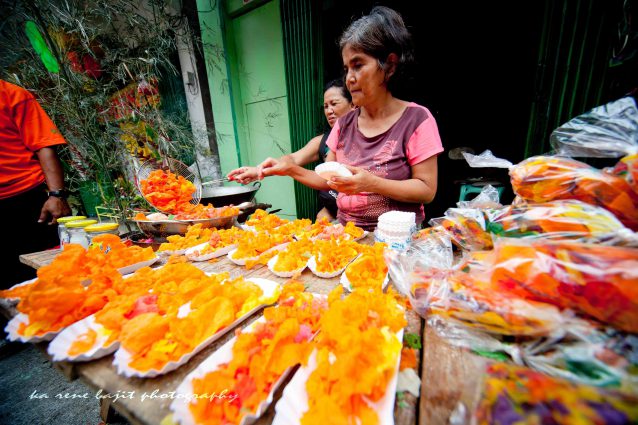April is special for the Philippine rice industry because it was proclaimed as the Panagyaman Festival Month, the national celebration of bountiful harvest.
Such festive events could be very enticing to attend because of extravagance, colorful food, and the opportunity for income-generating activities. Amidst merriments, the Philippine festivals are more than what meets the eye.
Here are some symbols and their meanings embedded in selected Philippine agricultural festivals such as Pahiyas in Lucban, Quezon; Carabao-Carroza, Pavia, Iloilo; and Kuligligan, Bayombong, Nueva Vizcaya.

Carroza: Simple life
Carroza, a bamboo sled pulled by a carabao to transport paddy rice, embodies simplicity that locals, especially in Pavia, Iloilo, used to live. Today, carroza is rarely seen because of a farm machine called kuliglig that displaced it. So when carrozas filled with vegetables and fruits are flaunted in the festival, the locals would recall the old times when crops were abundant in their community. Land conversions owing to the rise of feed mills, foam, furniture, and oil industries were said to have affected crop cultivation.

Carabao: Culture
Carabao’s intertwining with the Philippine culture cannot be overemphasized because it is the country’s national animal. This reputation is of course backed by historical data reflecting the animal’s introduction in the country around 300-200 BC. In festivals, the carabaos are adorned with garlands while more than half of the villages participating in the Carroza-Carabao have hired carabaos from other places as they no longer have them in their areas. This representation of the carabao imply its significance in the town’s culture and the need to share its importance to the youth and tourists.

Kuliglig: Bounty
If carabao as a symbol tended to be a little nostalgic, Nueva Vizcaya’s Kuligligan Festival highlights kuliglig as a symbol of progressive agricultural province, which supports mechanization. Festival participants would further emphasize this symbolism by stuffing the machine with crops mostly grown in the province such as tomato and Perante Orange.

Agricultural products: Pride
Producing rice is not easy owing to the unstable weather and constantly inflating cost. This is why farmers felt a sense of pride displaying their products in carrozas, kuliglig, and in their houses. As they say, “We want the world to see our products during the festivals.”
Women: Preservation
Women are central figure in the parade of carrozas and kuliglig. In the Carabao-Carroza Festival, the search for the festival queen was conceptualized to encourage the youth to attend in the festivities, while in the Kuligligan Festival, most of the floats include a woman in the tribe’s traditional costume. As agents of fostering agriculture sustainability and of representing treasured possessions such as the tribal traditional costumes, the women symbolize preservation, which is vital in ensuring that the future generations will keep the identities valuable to the forefathers.
The meanings in Philippine agricultural festivals encompass the history, challenges, and current status of agriculture in the country: the yearning for simpler life before the complexity of land conversions and industrialization, the traditionally farming activities marked by carabao, the economic and climate challenges in producing rice, and the dying interest of youth in the industry.
More than getting sappy over the sentimental meanings of the symbols, it is important for organizations and agencies concerning rice to look at how to use these meanings in implementing programs.
This article was based on the results of communication and ethnographic study titled The Embodiment of Food Security in Philippine Agricultural Festivals by PhilRice’s Rice Science Museum researchers Charisma Love B. Gado-Gonzales, Floper Gershwin E. Manuel, Hermenigildo U. Gandeza, and Diadem B. Gonzales-Esmero. The study, presented in parts, were presented in national and international conferences.




